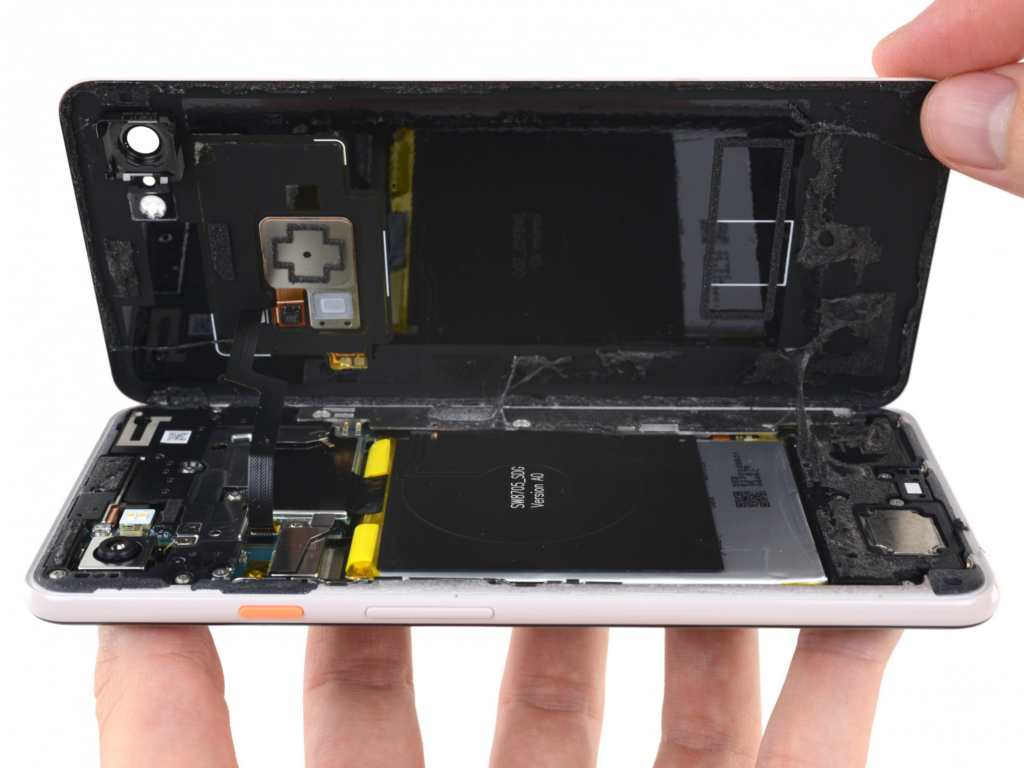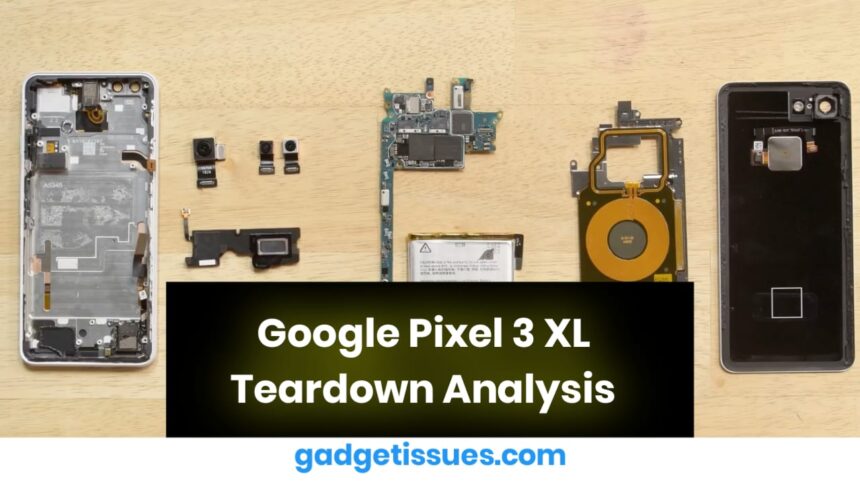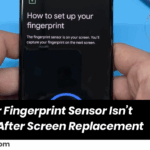The Google Pixel 3 XL features a modern flagship design with a glass back and a notched display. This teardown provides an in-depth look at the internal components and repairability of the device.
Specifications
- Display: 6.3″ OLED with QHD+ resolution (1440 × 2960, 523 ppi), Gorilla Glass 5
- Processor: Qualcomm Snapdragon 845 (Octa-core, 64-bit, 2.5 GHz + 1.6 GHz)
- RAM: 4 GB LPDDR4x
- Storage: 64 GB or 128 GB
- Cameras: 12.2 MP main camera with ƒ/1.8, OIS, dual-pixel autofocus; Dual 8.1 MP front cameras (wide + ultrawide)
- Other Features: Qi wireless charging, IP68 water resistance, Android 9.0 Pie
Teardown Process
- External Design
- The back is a single piece of glass with a matte finish.
- No speaker grilles on the aluminum frame due to front-firing speakers.
- The notch houses dual front cameras.
- Opening the Device
- Foam adhesive makes opening difficult; heat and suction tools were required.
- Surprisingly, the back cover detached before the display.
- A long fingerprint sensor cable reduces the risk of accidental damage.
- Internal Components
- Wireless charging coil secured with strong adhesive.
- Battery uses stretch-release adhesive but is still difficult to remove.
- Battery capacity: 13.2 Wh, slightly less than Pixel 2 XL (13.6 Wh) but better than iPhone XS Max (12.08 Wh).
- Motherboard covered with metal shields and thermal paste for heat dissipation.
- Speaker assembly sealed with waterproofing adhesive.
- Key Internal Chips
- Memory & Processing:
- Qualcomm Snapdragon 845
- Micron 4 GB LPDDR4X RAM
- SK Hynix 64 GB NAND flash

- Graphics & Security:
- Google Pixel Visual Core
- Google Titan M security chip
- Connectivity & Power Management:
- Qualcomm RF transceivers, power amplifiers, and envelope trackers
- Qualcomm power management ICs
- Other Sensors & Chips:
- Bosch accelerometer, gyroscope, and pressure sensor
- Cirrus Logic audio amplifiers
- NXP NFC controller
- Cameras
- Ultrawide selfie camera for group selfies.
- Rear camera uses AI-enhanced processing with a Sony IMX363 sensor.
- Display & Build Materials
- Display supplier: Samsung AMOLED panel (improved over previous LG panels).
- Display is difficult to replace; requires removing the entire phone frame.
- Pixel 3 (non-XL) uses an LG panel instead of Samsung’s.
Repairability Score: 4/10
- Pros: Standard T3 Torx screws, stretch-release adhesive for battery.
- Cons: Heavy adhesive use, fragile glass back, difficult display replacement, complete disassembly required for most repairs.
Final Thoughts
The Pixel 3 XL combines premium materials and features but is not very repair-friendly. Strong adhesive, a fragile glass back, and a complex teardown process make self-repairs challenging.
Also Read : HP Laptop Keyboard Not Responding After Water Spill? Here’s How To Fix It







